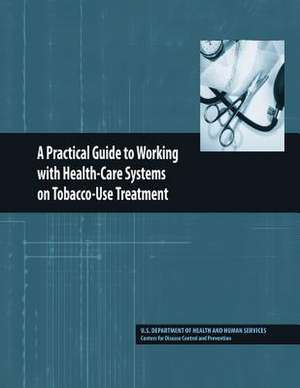A Practical Guide to Working with Health-Care Systems on Tobacco-Use Treatment
Autor U. S. Department of Heal Human Services, Centers for Disease Cont And Preventionen Limba Engleză Paperback
Preț: 110.22 lei
Preț vechi: 116.01 lei
-5% Nou
Puncte Express: 165
Preț estimativ în valută:
21.09€ • 21.94$ • 17.41£
21.09€ • 21.94$ • 17.41£
Carte disponibilă
Livrare economică 25 martie-08 aprilie
Preluare comenzi: 021 569.72.76
Specificații
ISBN-13: 9781478125259
ISBN-10: 147812525X
Pagini: 138
Dimensiuni: 216 x 279 x 8 mm
Greutate: 0.34 kg
Editura: CREATESPACE
ISBN-10: 147812525X
Pagini: 138
Dimensiuni: 216 x 279 x 8 mm
Greutate: 0.34 kg
Editura: CREATESPACE
